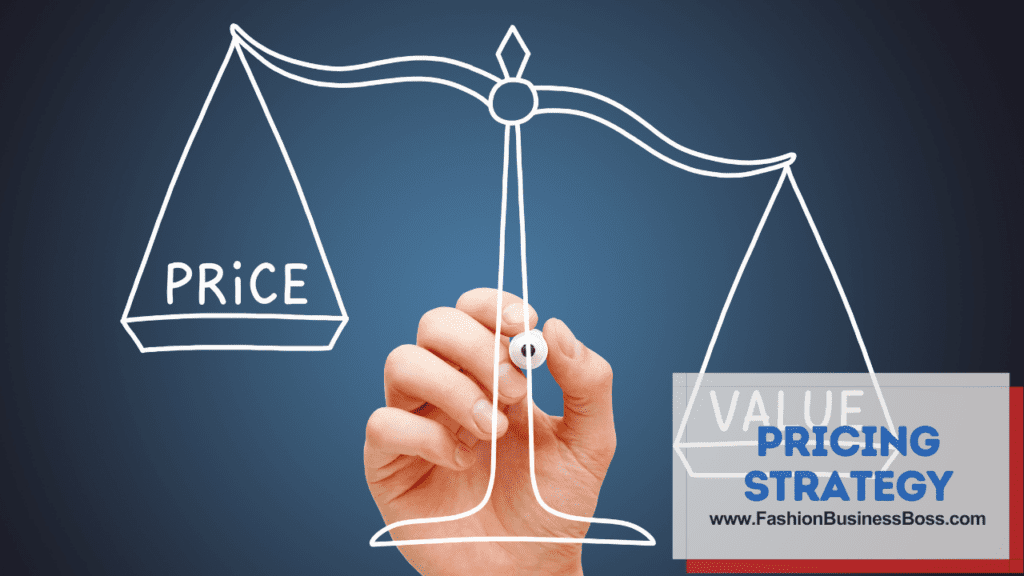Launching a clothing line is akin to bringing a piece of your creativity and style to life. It’s an exhilarating journey filled with creativity, innovation, and the potential for triumph. However, it’s also a fiercely competitive industry where staying ahead requires more than just a passion for design.
Here are some essential clothing line tips: Define your brand identity, prioritize quality, stay sustainable, establish a strong online presence, and adapt to market trends for lasting growth.
In this article, we’ll unveil a masterful guide to building a clothing line that not only captures your unique vision but also resonates with your target audience.
Define Your Unique Brand Identity

Establishing a distinctive brand identity is fundamental. To begin, thoroughly comprehend your intended customer base. Understand their preferences, needs, and values. Next, formulate a compelling brand narrative that resonates with your audience. This narrative should convey the essence of your brand’s mission, values, and unique selling points.
Moreover, decide on the style and message your clothing line will embody. This entails determining the overall aesthetic and tone of your designs. Are you aiming for a casual, elegant, or eclectic style? What message do you want your clothing to communicate? Clarity in these decisions is essential.
By solidifying your brand identity in these ways, you pave the path to differentiation in a crowded market. It ensures that your clothing line aligns with your target customers’ desires and preferences, making it more likely to resonate with them and stand out from the competition.
Read more about: Clothing Line Marketing Plan: From Ideas to Action
In-Depth Market Research
Conducting comprehensive market research is a crucial step in the journey of fashion entrepreneurship. It involves a careful examination of your competition, the identification of prevailing trends, and the discovery of opportunities in the market that your clothing line can seize.
Begin by scrutinizing your competitors. Analyze their products, pricing, and branding strategies. Understanding what others in your field are doing can provide valuable insights into what works and what doesn’t.
Next, focus on identifying current trends in the fashion industry. What styles, colors, and materials are popular? This information can guide your design choices and help you align your clothing line with the preferences of potential customers.
Furthermore, seek out gaps or unmet needs in the market. Is there a particular style or niche that isn’t well-served by existing brands? Identifying these gaps can present unique opportunities for your clothing line to thrive.
By conducting in-depth market research, you gain a clearer understanding of your competition and consumer preferences, enabling you to tailor your designs to meet the demands of your target audience effectively.
Quality Over Quantity
In the world of fashion, there is a common error – the rush to create a large quantity of clothing items. However, a wiser approach is to place a higher value on quality rather than quantity. Begin with a modest collection of carefully crafted pieces that exhibit your distinct style and meticulous attention to detail.
Focusing on quality entails a dedication to ensuring that each item you create is crafted with precision and care. This approach is about delivering products that are not only visually appealing but also durable and well-made. Quality items tend to garner more attention and admiration from your audience.
Moreover, quality pieces often lead to increased customer loyalty. When customers recognize the craftsmanship and durability of your clothing, they are more likely to return for future purchases and recommend your brand to others. Building a reputation for quality can be a strong asset in the competitive fashion industry, as it sets your clothing line apart and fosters trust among your customers.
Sustainable Practices

In the present times, there’s a growing awareness among consumers about the importance of sustainability. It’s wise to contemplate integrating eco-friendly practices into your clothing line. These practices may involve the use of organic materials, adopting ethical manufacturing processes, and opting for sustainable packaging.
Firstly, choosing organic materials means selecting fabrics and materials that are grown without harmful chemicals or pesticides. These materials are kinder to the environment and reduce the carbon footprint of your clothing line.
Ethical manufacturing involves ensuring that the individuals involved in producing your clothing are treated fairly and work in safe conditions. This not only respects human rights but also contributes to a more positive public image.
Moreover, sustainable packaging choices, such as recyclable or biodegradable materials, help minimize waste and environmental impact.
By embracing sustainable practices, you not only appeal to environmentally-conscious consumers but also align with current market trends. Consumers increasingly value brands that demonstrate a commitment to ecological responsibility. This alignment not only benefits the planet but also enhances the reputation and desirability of your clothing line among socially conscious consumers.
Read more about: Clothing Line Consultant: Elevate Your Brand’s Style
Establish an Online Presence
In today’s digital era, it’s imperative to establish a robust online presence for your clothing line. This involves a few key steps:
Firstly, craft an attractive website that is visually appealing and user-friendly. Your website serves as the digital storefront for your brand, so it should effectively showcase your clothing designs and provide a seamless shopping experience for visitors.
Leverage social media platforms to your advantage. These platforms offer an opportunity to not only display your clothing but also engage with your audience. Regularly post captivating content that highlights your designs and brand values. Interact with your followers by responding to comments and messages, fostering a sense of community around your brand.
Furthermore, maintaining an active and up-to-date website is essential. Regularly update your site with fresh content, such as new product launches, blog posts, or behind-the-scenes glimpses of your creative process. Consistency in online engagement and content creation is key to building brand loyalty and trust with your audience.
By establishing a strong online presence, you ensure that your clothing line is visible and accessible to a broader audience, ultimately contributing to the growth and recognition of your brand.
Collaborations and Influencer Marketing
Collaborations and influencer marketing can be potent tools to enhance the visibility and credibility of your clothing line.
Firstly, collaborating with other designers or influencers involves forming partnerships with individuals or entities who share a common interest or values with your brand. This synergy allows you to tap into their existing audience and gain exposure to a broader demographic.
In particular, working with influencers can be highly effective. Influencers are individuals with a substantial following on social media or other platforms. When you partner with influencers who align with your brand’s values and style, their endorsement can introduce your clothing line to a larger and potentially receptive audience.
Moreover, these partnerships can bolster your brand’s credibility. When influencers or respected designers endorse your clothing, it lends authenticity and trustworthiness to your brand in the eyes of consumers.
Pricing Strategy

Crafting an effective pricing strategy for your clothing line is vital. It involves setting the right prices that reflect the value of your garments while remaining competitive in the market.
To begin, it’s important to consider the perceived value of your clothing items. Think about the quality, uniqueness, and craftsmanship that your pieces offer. These factors contribute to the perceived worth of your products. Ensure that your pricing aligns with this perceived value.
Transparency is key in your pricing approach. Be clear and open about how you arrive at your prices. Customers appreciate knowing what they’re paying for and why. Communicate the factors that justify your pricing, such as the use of high-quality materials, unique designs, or meticulous craftsmanship.
Moreover, take into account your competitors’ pricing. To remain competitive, your pricing should be within a range that is comparable to similar products in the market. Analyze the pricing strategies of competitors and find a balance between maintaining stability and offering value to your customers.
Read more about: Clothing Expense for Business: Beyond the Basics
Feedback and Adaptation
Embracing feedback and being adaptable are essential aspects of sustaining your clothing line in the long run.
Firstly, don’t hesitate to gather feedback from your customers and industry experts. Customer feedback provides valuable insights into their preferences and satisfaction with your products. Industry experts can offer perspectives on market trends and emerging consumer demands. Both sources of feedback can guide your decisions and improvements.
Continuous refinement is key. Use the feedback received to enhance your designs and strategies. Adjust your clothing line based on the insights gained from customer opinions and industry expertise. This iterative process ensures that your products remain aligned with the changing needs and tastes of your target audience.
Adaptability is paramount for enduring improvement. The fashion industry is dynamic, with trends evolving rapidly. Being able to pivot and adjust your designs and strategies in response to these changes is crucial. By staying attuned to market shifts and being willing to adapt, you position your clothing line for long-term viability.
Seasonal Collections
In the world of fashion, it’s important to understand the rhythm of seasonal cycles. Fashion trends naturally evolve throughout the year, and one effective way to keep your audience engaged is by creating seasonal collections that align with the changing seasons – typically, spring/summer and autumn/winter.
These seasonal collections allow you to remain relevant and dynamic in the eyes of your customers. During spring and summer, you can focus on lighter, more vibrant designs that suit warm weather. As autumn and winter approach, shift your focus towards warmer, cozy, and stylish options. This approach keeps your clothing line fresh and in tune with the weather and events of each season.
By consistently introducing new seasonal collections, you pique the interest of your audience. They become eager to see what fresh designs and styles you’ll unveil next. This anticipation can foster a loyal customer base that eagerly awaits your next creations.
Efficient Inventory Management

Effective inventory management plays a pivotal role in the smooth operation of your clothing line. It’s essential because both overstocking and understocking can have adverse financial consequences.
Overstocking, where you have more clothing items than your customers demand, ties up your resources in unsold inventory. On the other hand, understocking, which is not having enough of a popular item in stock, can result in missed sales opportunities and customer dissatisfaction.
To achieve efficient inventory management, consider implementing inventory tracking systems. These systems help you keep a close eye on your stock levels, allowing you to know precisely how much of each item you have on hand. Employ data analytics to predict customer demand. By analyzing past sales data and market trends, you can anticipate which items are likely to be popular and adjust your inventory accordingly.
Efficient inventory management ensures you maintain a balanced stock level, reducing the risk of excess inventory or stockouts. This approach not only helps you save money but also ensures that you can meet customer demands effectively and keep your clothing line running smoothly.
Read more about: Clothing Entrepreneurship: Starting Your Brand Right
Conclusion
Mastering the art of a clothing line requires a combination of creativity, business acumen, and a deep understanding of your target audience. By defining your brand identity, conducting thorough market research, prioritizing quality, embracing sustainability, and maintaining a strong online presence, you can set yourself on the path to accomplishment in the fashion industry. Remember that achievement often comes with persistence and a willingness to adapt to an ever-evolving market. With dedication and a passion for your craft, your clothing line can thrive and leave a lasting mark on the fashion world.
Frequently Asked Questions

Q: How do I start a clothing line from scratch?
A: To initiate a clothing line, begin by defining your brand, conducting market research, designing quality pieces, and establishing an online presence.
Q: What’s the importance of sustainable practices in the fashion industry?
A: Sustainable practices in fashion reduce environmental impact, appeal to conscious consumers, and align with current market trends.
Q: How can I effectively manage my clothing line’s inventory?
A: Efficient inventory management involves implementing tracking systems, data analytics, and demand prediction to maintain optimal stock levels.
Q: Why to consider when collaborating with influencers?
A: Collaborating with influencers helps expand your brand’s reach, build credibility, and connect with a broader audience that aligns with your brand.
Q: What pricing strategy should I adopt for my clothing line?
A: Determine a pricing strategy that reflects the value of your clothing while staying competitive in the market, being transparent about your pricing, and justifying it through quality and craftsmanship.
To learn more about starting your own clothing business, check out my startup documents here.
Please note that the contents of this blog are for informational and entertainment purposes only and should not be construed as legal advice. Any action taken based on the information provided in this blog is solely at your own risk. Additionally, all images used in this blog are generated under the CC0 license of Creative Commons, which means they are free to use for any purpose without attribution.

Meet Shawn Chun: Entrepreneur and Fashion Business Fan.
I’m a happy individual who happens to be an entrepreneur. I have owned several types of businesses in my life from a coffee shop to an import and export business to an online review business plus a few more and now I create online resources for those interested in starting new ventures. It’s demanding work but I love it. I do it for those passionate about their business and their goals. That’s why when I meet a designer or boutique owner at a craft fair, farmers market, retail location or anywhere else I see myself. I know how hard the struggle is to retain clients, find good employees and keep the business growing all while trying to stay competitive.
That’s why I created Fashion Business Boss: I want to help fashion business owners like you build a thriving business that brings you endless joy and supports your ideal lifestyle.

